Hydrangeas can be a divisive flower; many people either adore them or dislike them entirely. Despite this, there’s no denying that they’re some of the most iconic blooms of all. Hydrangeas have become popular across the globe and can be found growing on nearly every continent. Let’s dive into 25 fun and interesting facts about hydrangeas!
1. There Are Roughly 75 Different Species of Hydrangeas
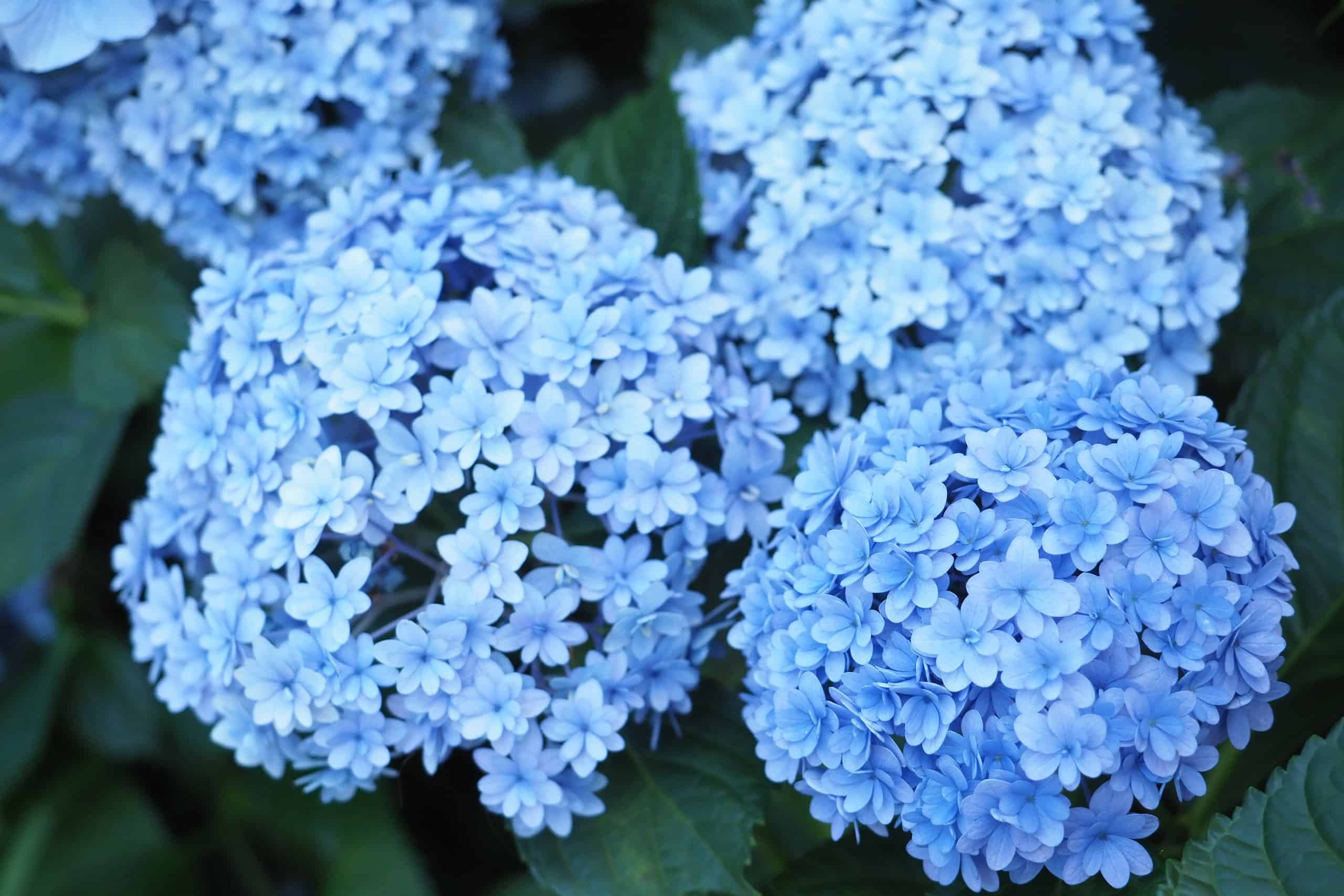
Despite this large number, only a handful of hydrangeas are commonly grown in gardens.
©qiufan bu/Shutterstock.com
According to North Dakota State University, “The Hydrangea (or Hortensia) genus consists of about 70-75 species and over 600 named cultivars.”
2. Hydrangeas Come In a Variety of Different Colors
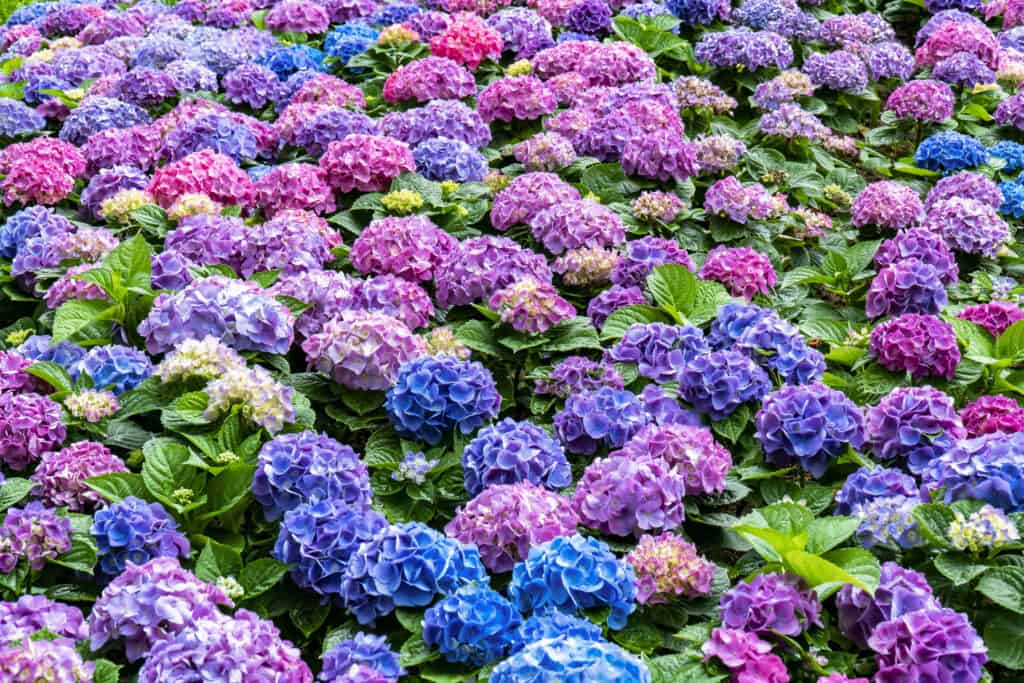
Hydrangeas range in shades from vibrant pink to deep blue.
©iStock.com/phanasitti
Believe it or not, the pH level of the soil that hydrangeas are planted in will play a huge role in determining their color.
3. Many Hydrangeas Are Native to Asia

Hydrangeas are beloved across the globe.
©iStock.com/Marketa Bement
Some Asian hydrangea varieties include ajisai, Chinese hydrangea, and climbing hydrangeas.
4. The Word Hydrangea Has Greek Origins

Hydrangeas are sometimes called “change roses.”
©krolya25/Shutterstock.com
The word “hydrangea” is a combination of the Greek word “hydros,” meaning water, and the Greek word “angos,” meaning vessel. These words combine to create something similar to “water vessel,” nodding to this plant’s voracious appetite for water.
5. Hydrangeas Are Cape Cod’s Signature Flower

Cape Cod hosts an annual hydrangea festival.
©Janice Higgins/Shutterstock.com
Even though hydrangeas aren’t native to Cape Cod, they’ve exploded in popularity here. So much so that this flower is an absolute symbol of this area.
6. Hydrangeas Are Toxic
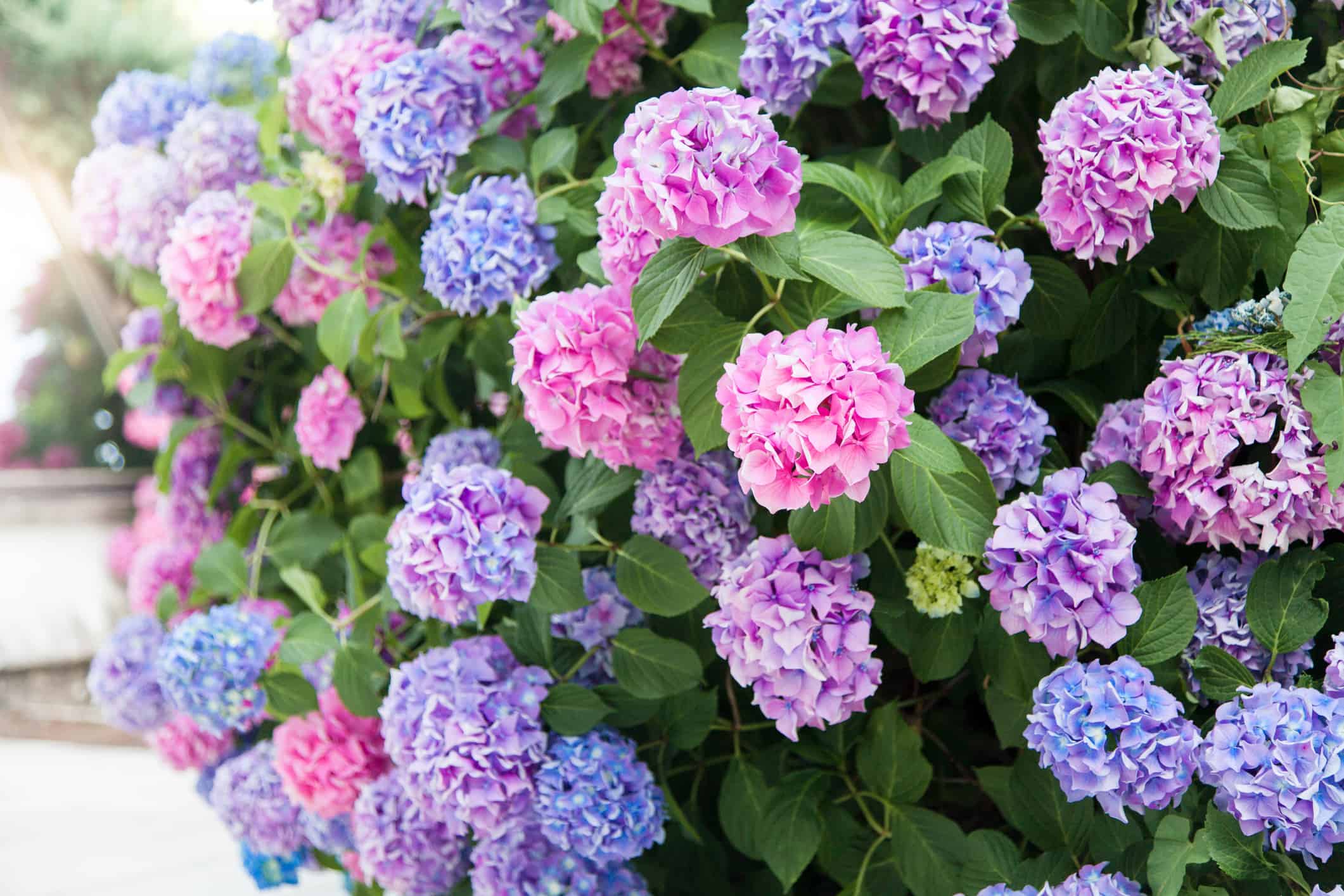
If your pet or child accidentally consumes hydrangeas, seek medical attention immediately.
©iStock.com/Maryna Andriichenko
Despite their beauty, this flower is dangerous. If ingested by humans or animals, it can be potentially deadly as it contains trace amounts of cyanide.
7. Hydrangeas Have a Long Blooming Season

If the temperature outside gets too hot, hydrangeas may stop blooming.
©Joanne Strell/Shutterstock.com
Hydrangeas bloom for a very long time in many regions in the United States, typically starting in March and ending in October. Depending on where you live, this will vary slightly.
8. Hydrangeas Can Have Many Different Meanings
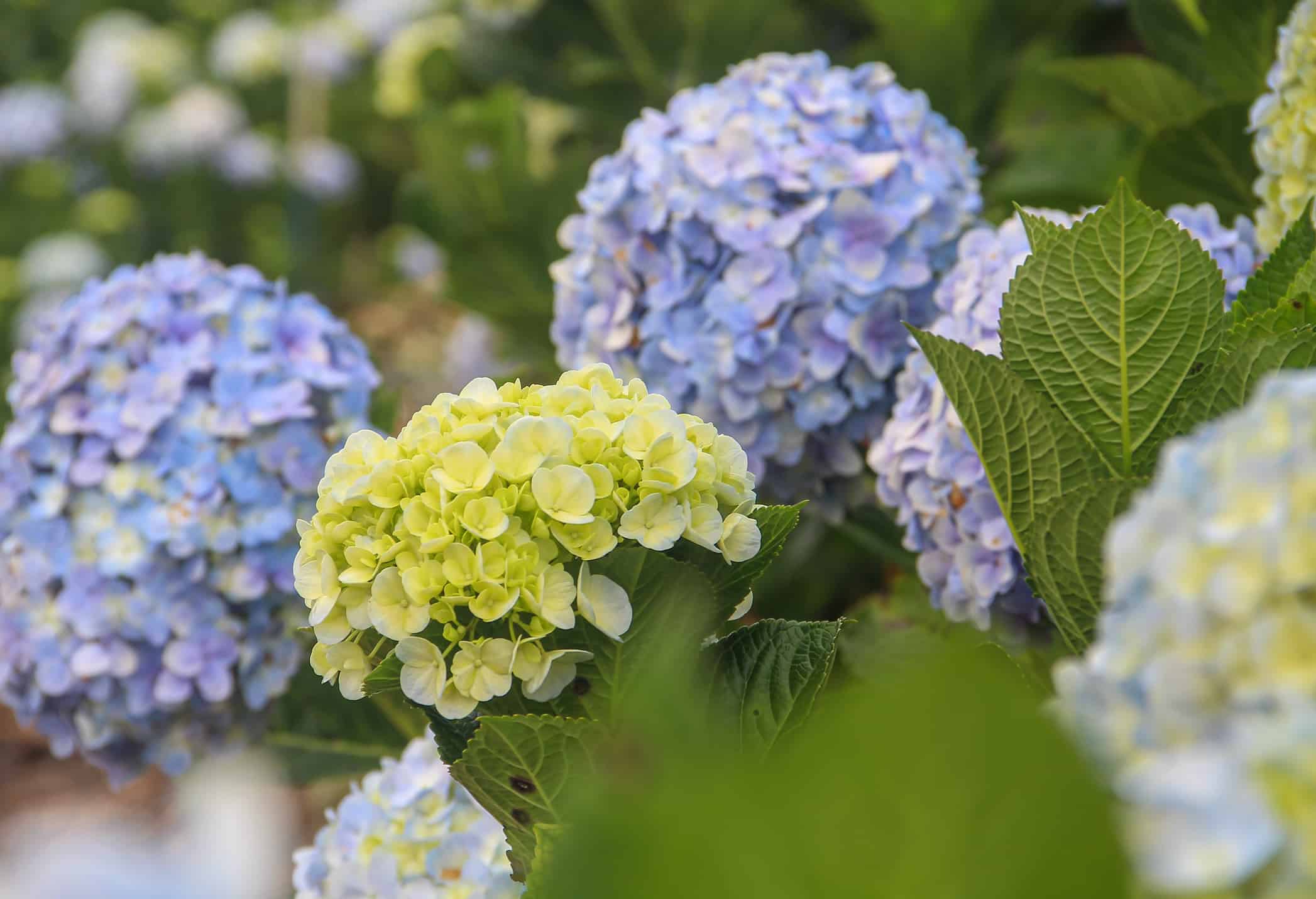
Gifting hydrangeas is common in many places throughout the world.
©Nguyen Minh Tam/ via Getty Images
While some cultures see these flowers as a symbol of arrogance, others interpret hydrangeas as embodying positive qualities, such as new beginnings, innocence, and gratitude.
9. Hydrangeas Don’t Really Have Petals
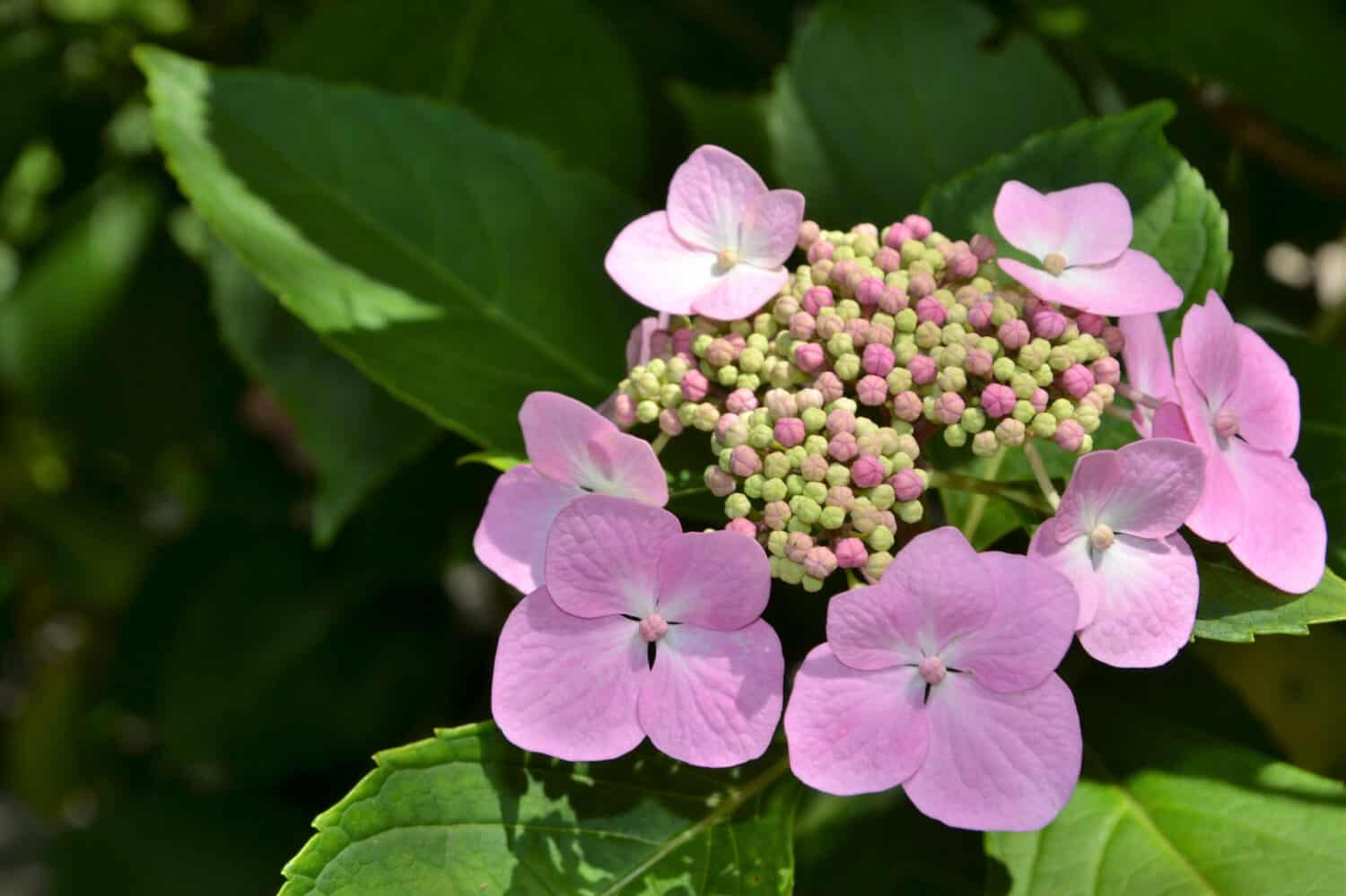
The sterile flowers are highly visible while the fertile flowers are less pronounced.
©PaulSat/Shutterstock.com
Although it might be surprising, those delicate flower petals aren’t actually petals at all. According to the Norfolk Botanical Garden, “The flowers do not have petals, but the sterile flowers have developed very showy sepals (part of the outer portion of a flower known as the calyx).”
10. Hydrangeas Have Their Own Holiday

The amount of people who celebrate National Hydrangea Day increases each year.
©iStock.com/9632290_400
Individuals who are passionate about this flower will be happy to learn that it has its own dedicated holiday. National Hydrangea Day is celebrated on January 5th each year.
11. Hydrangea Enthusiasts Have Their Own Club
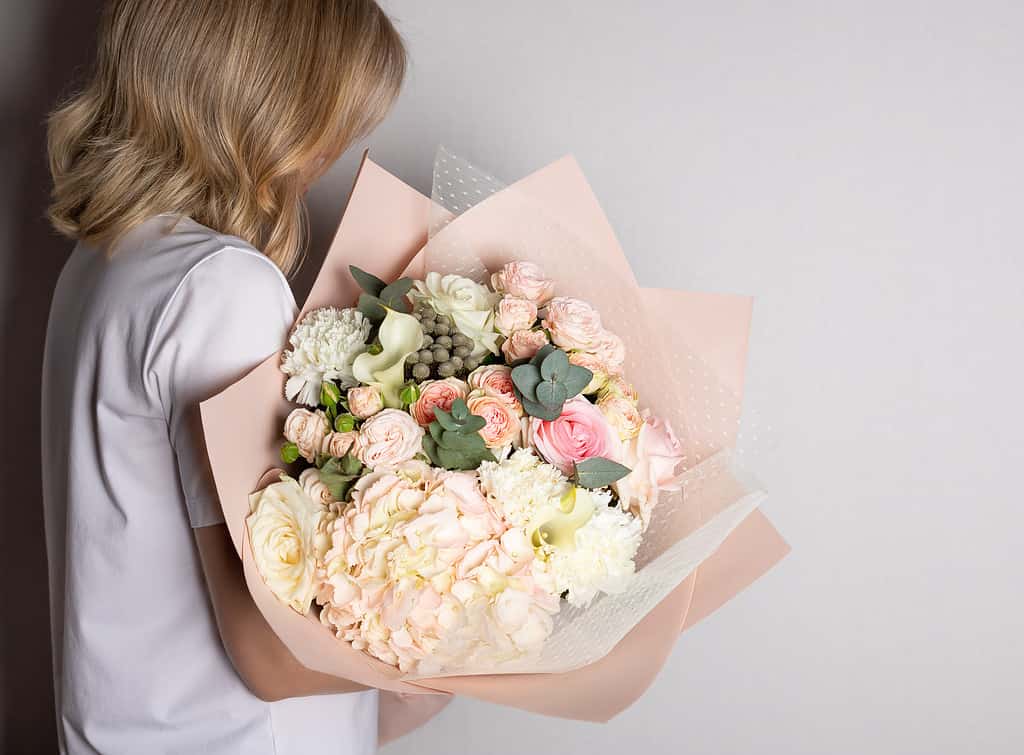
Hydrangeas make a perfect addition to any bouquet.
©Mila Naumova/iStock via Getty Images
Are you a hydrangea fanatic? If so, you’re in luck because the American Hydrangea Society is accepting new members!
12. Hydrangeas Are the Perfect Flower for Individuals With Allergies

In addition to being allergy-friendly, hydrangeas are also easy to grow.
Unlike other flowers, the pollen that hydrangeas produce is sticky and not easily carried by the wind. Because of this, many people with allergies report that this flower doesn’t trigger them as much as others.
13. Hydrangeas Are Hardy

Hydrangeas grow well in zones three to nine.
©ncvalkyrie/Shutterstock.com
If you’re not someone who has a green thumb, hydrangeas just might be the flower for you. These plants are hardy to a variety of weather and temperature conditions.
14. Some Hydrangeas Can Grow To Be Over 50 Feet Tall
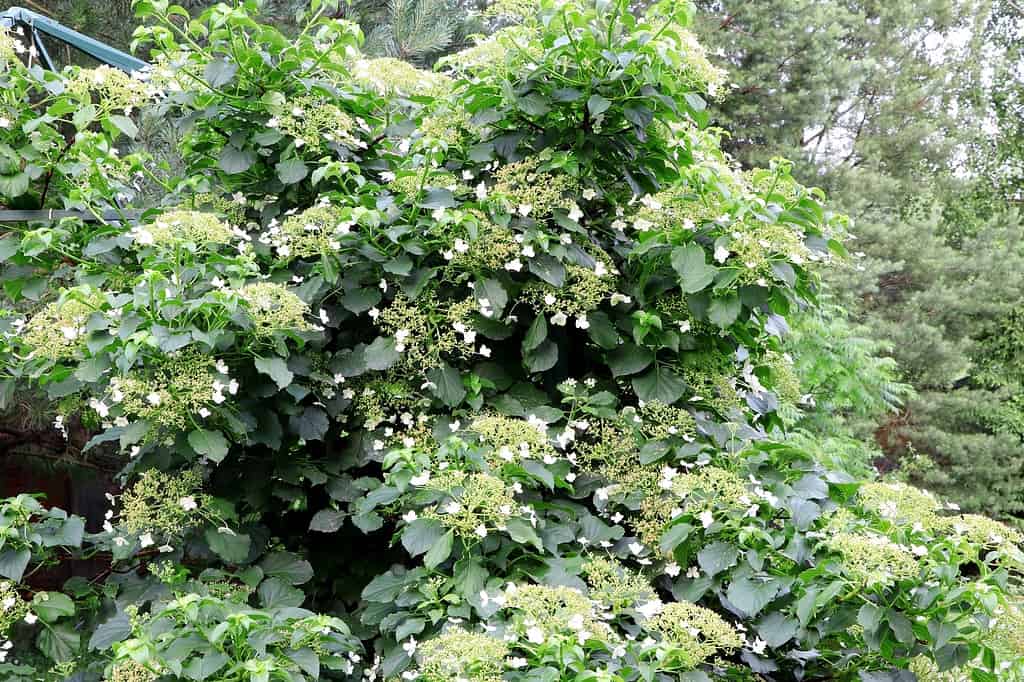
Some climbing hydrangeas can reach 80 feet tall.
©Mikhail Kolomiets/ via Getty Images
Although some hydrangeas are small, other species, such as the climbing hydrangea, can grow to incredible heights.
15. French Hydrangeas Are the Most Popular Variety
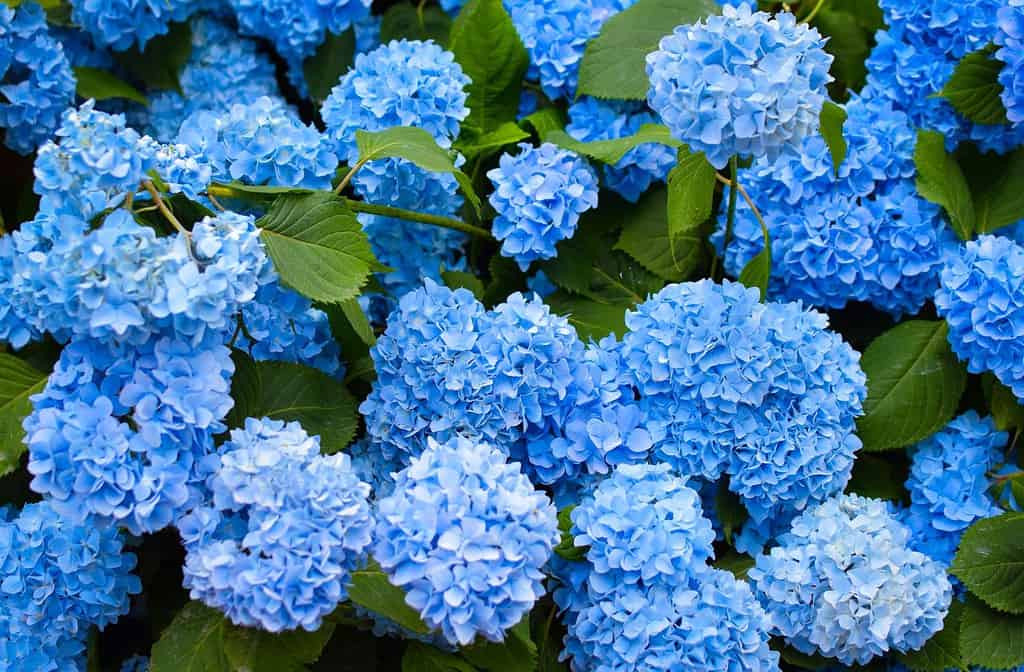
Hydrangeas will bloom yearly.
©Alya_Ro/Shutterstock.com
Although many different hydrangeas are easy to care for and beautiful, the French hydrangea takes the title of the most popular choice.
16. The Color of a Hydrangea Can Change Its Meaning
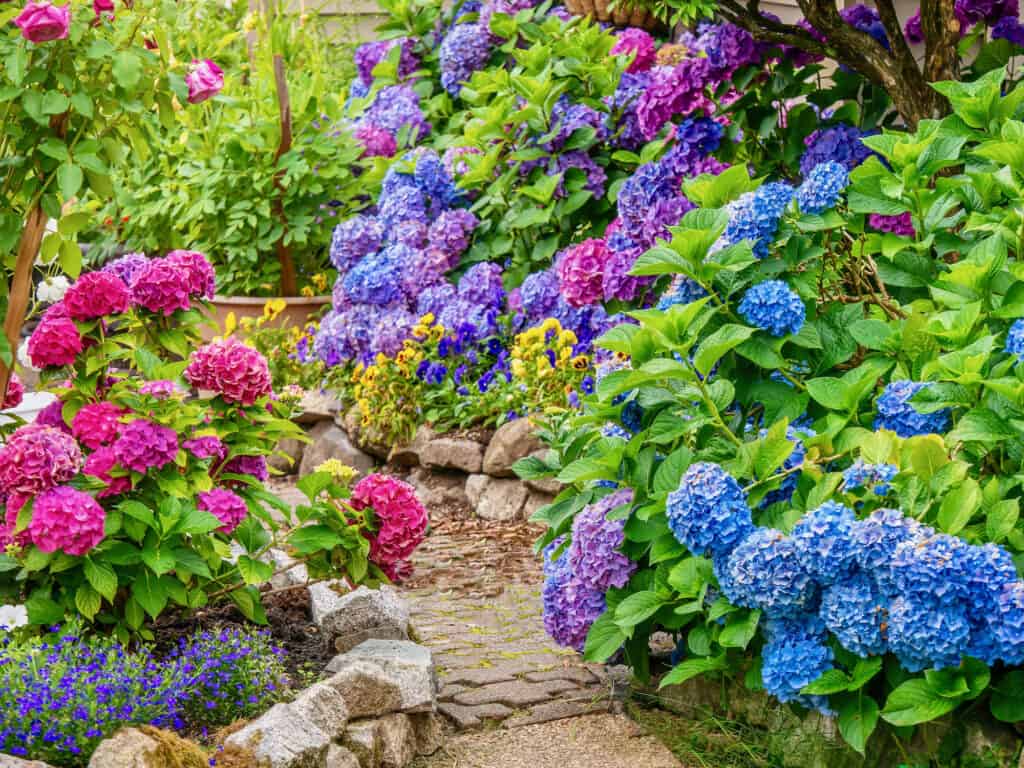
Gardeners can control the color of their hydrangeas by altering the pH level of the soil.
©iStock.com/Cheryl Ramalho
Some people believe that pink hydrangeas symbolize romantic love, while blue hydrangeas symbolize sorrow or forgiveness. White hydrangeas usually carry the meaning of innocence and purity.
17. A Hydrangea Is the State Wildflower of Alabama
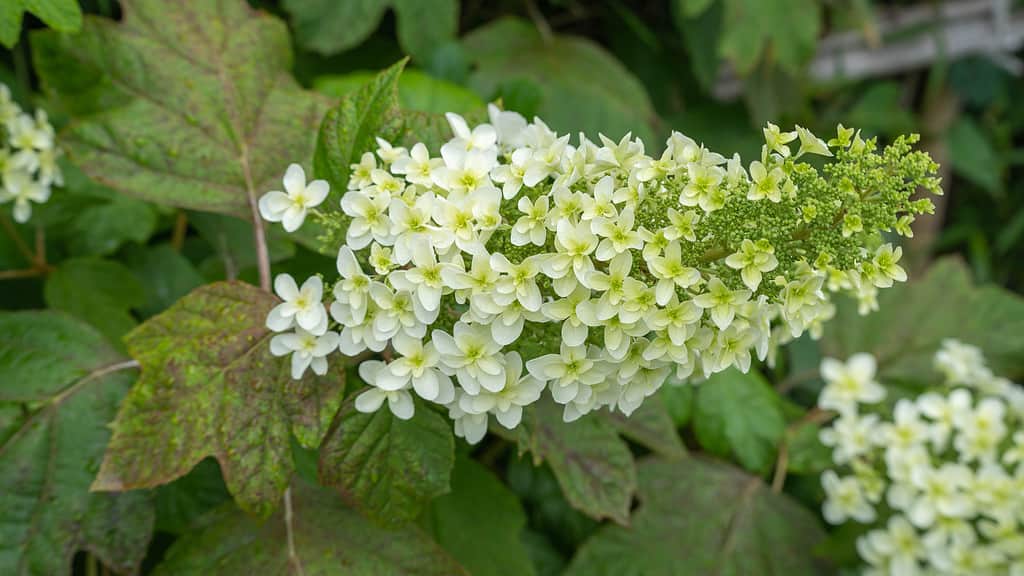
Similar to other hydrangeas, the oak leaf hydrangea comes in a variety of colors.
©aomas/Shutterstock.com
In 1999, the oak leaf hydrangea was declared the state wildflower of Alabama.
18. Hydrangeas Are Perennials
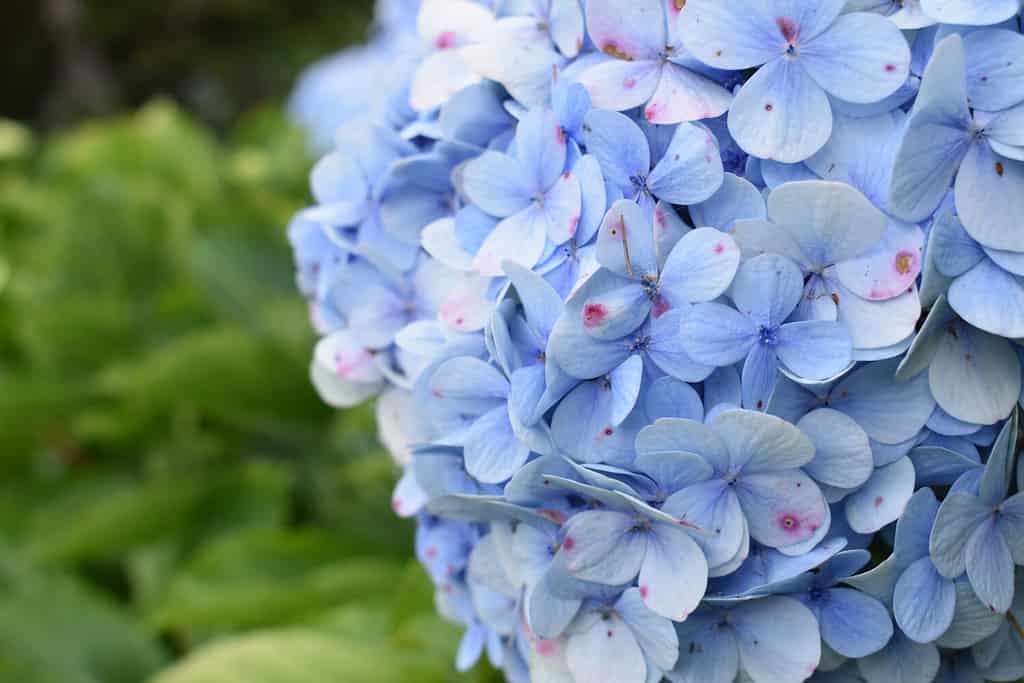
The correct hydrangea variety for your zone is a key part of them coming back each spring.
©Light and Vision/Shutterstock.com
If gardeners take care of their hydrangeas, they will return each year as they are perennials.
19. Hydrangeas Are a Popular Anniversary Gift

These flowers are sure to please as a gift for any occasion!
©luckakcul/Shutterstock.com
Some people believe that hydrangeas should be gifted on a couple’s fourth wedding anniversary in order to convey your appreciation for your partner.
20. Hydrangeas Require a Lot of Watering
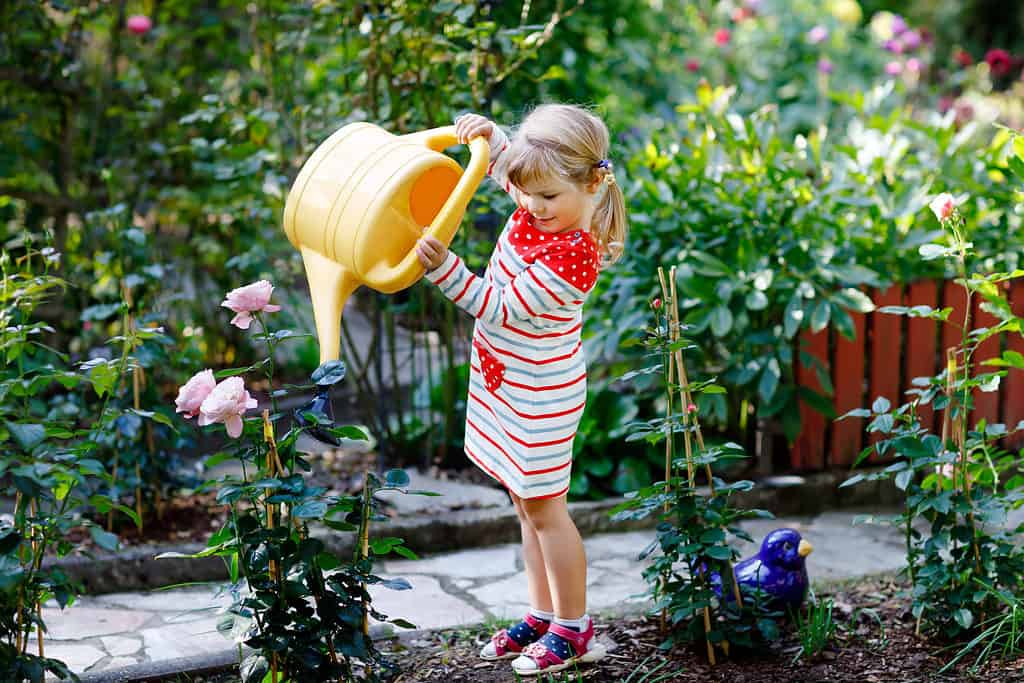
French hydrangeas in particular need a lot of water to survive.
©iStock.com/romrodinka
Although this hardy flower is somewhat low maintenance, watering it properly is key. This will ensure that your plant blooms consistently.
21. Hydrangeas Attract a Variety of Insects
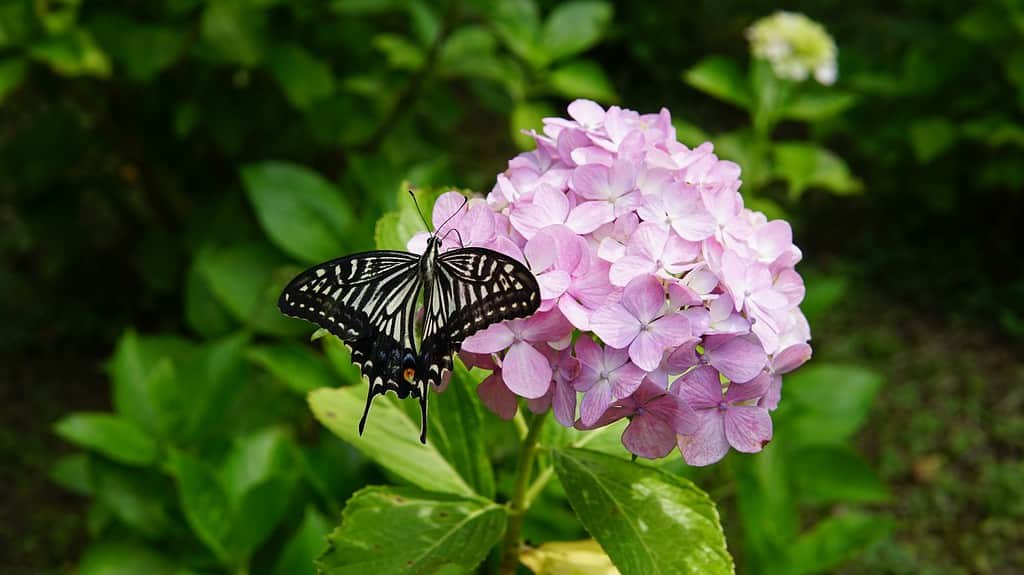
Lace cap hydrangeas in particular are attractive to insects.
©GlimpseDays/Shutterstock.com
Although this plant might be deadly to animals and humans, it attracts a variety of insects such as butterflies, moths, and bees.
22. Many People Plant Hydrangeas for Privacy
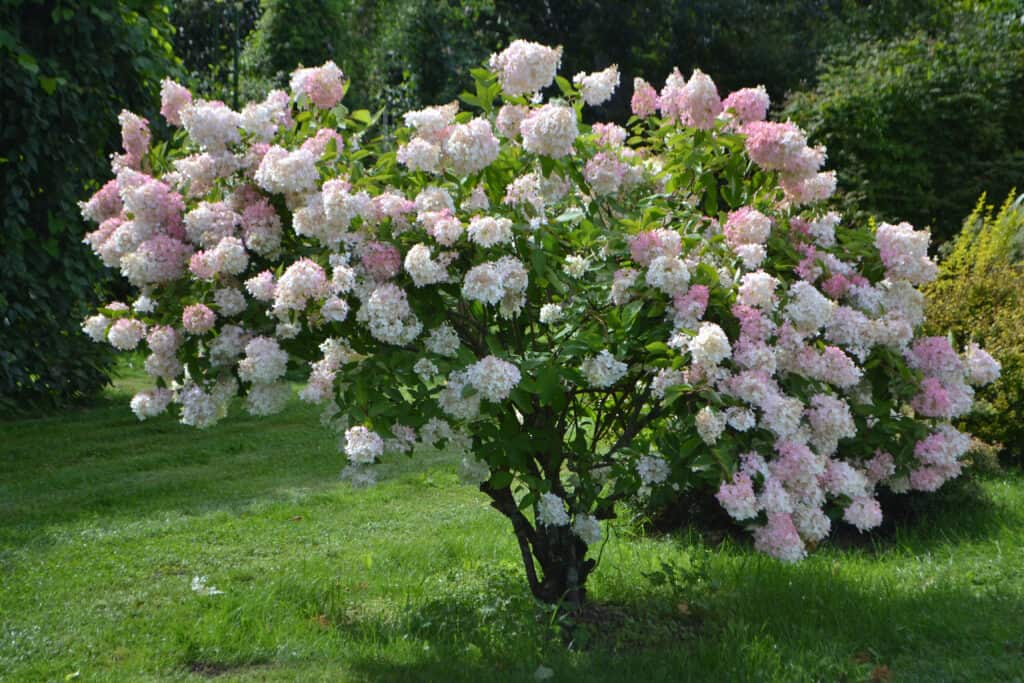
Hydrangeas are functional in addition to being aesthetically pleasing.
©Edita Medeina/Shutterstock.com
Since these shrubs can grow thick and dense, hydrangeas can serve as a beautiful privacy hedge.
23. Hydrangeas Can Live Up to 50 Years
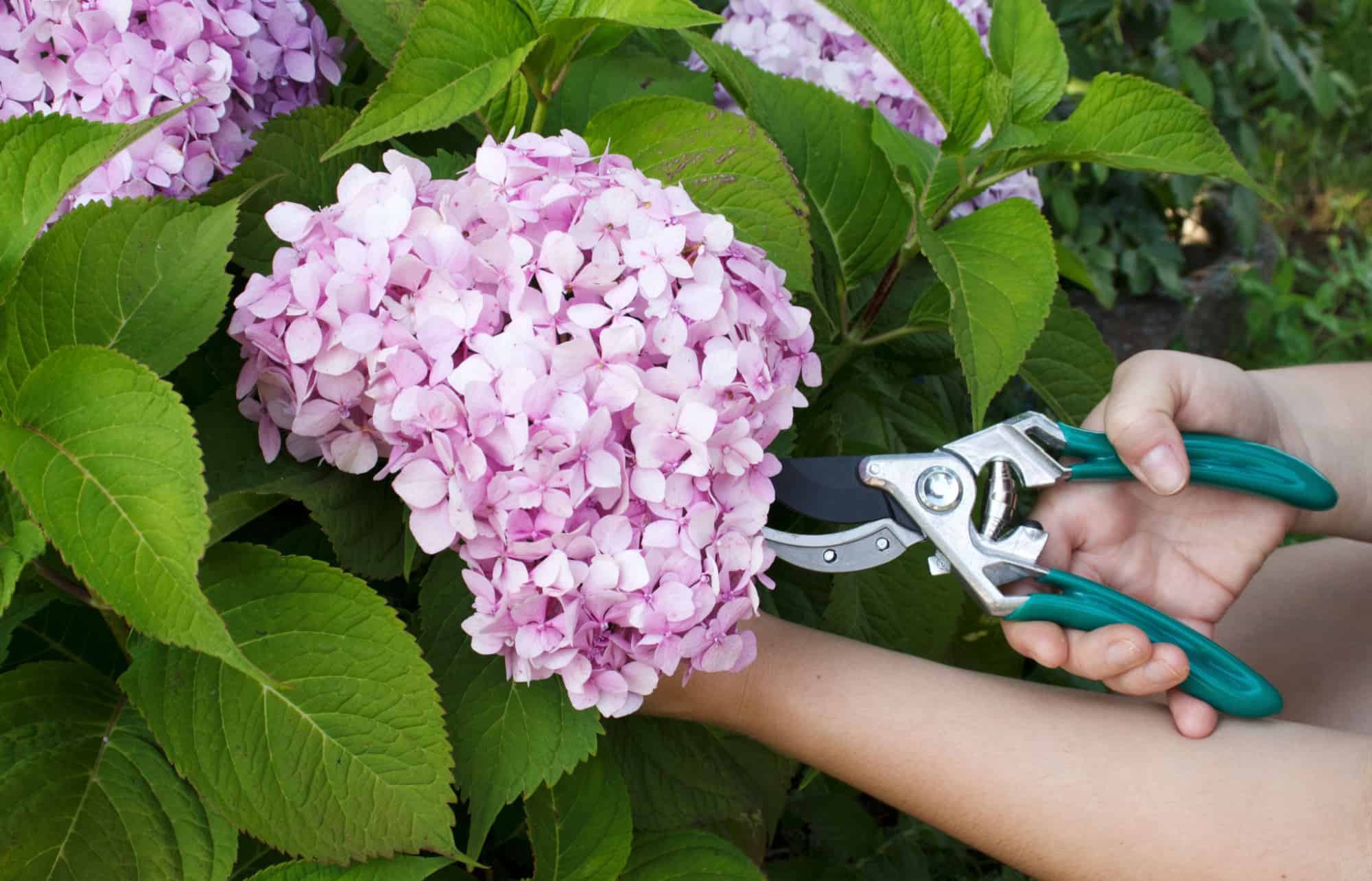
Hydrangeas prefer partial-sun areas.
©Natallia Ustsinava/Shutterstock.com
If gardeners consistently water and properly care for their hydrangeas, they can live for up to half a century!
24. White Hydrangeas Don’t Change Color
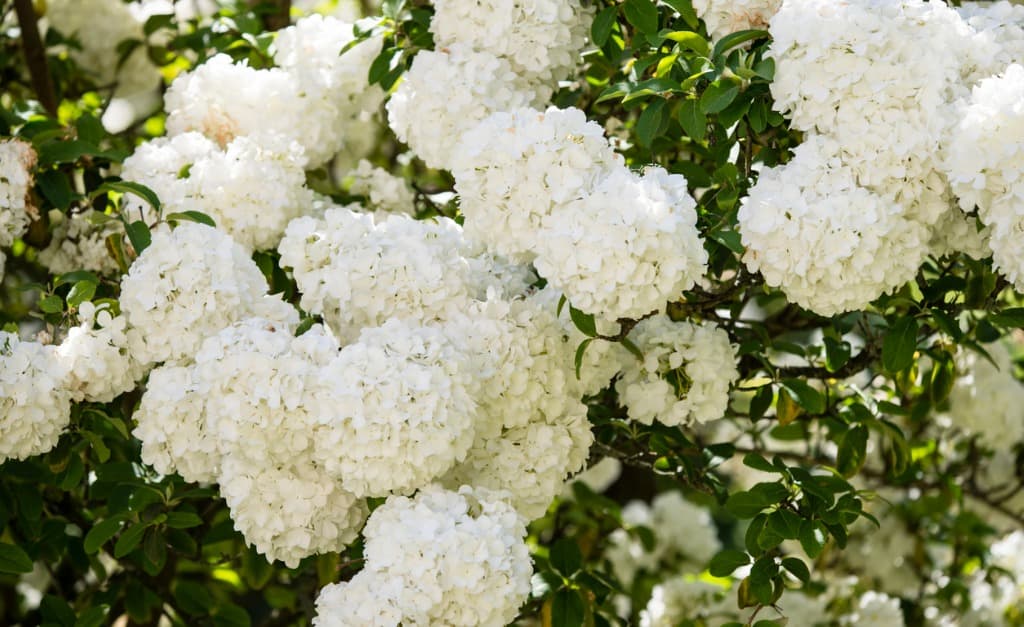
White hydrangeas look like large clumps of cotton.
©iStock.com/AlessandroZocc
Unlike colored hydrangeas, white hydrangeas don’t change color based on the pH level of the soil that they’re planted in.
25. Hydrangeas Are Ancient
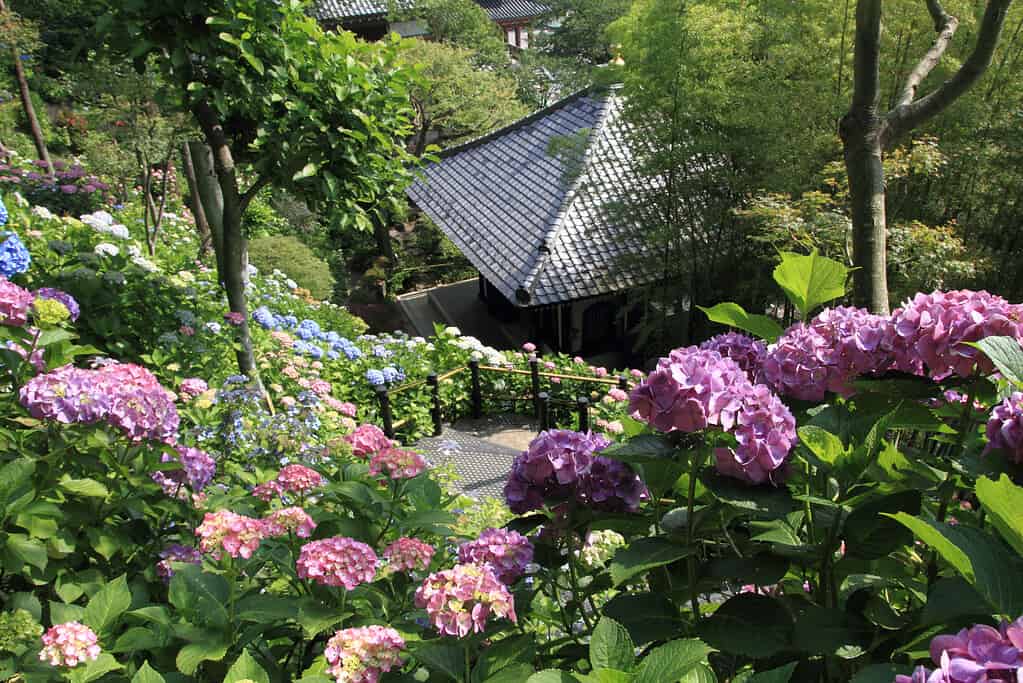
Fossilized flowers are quite rare.
©ziggy_mars/iStock via Getty Images
Hydrangeas are one of the most ancient flowers of all, and some hydrangea fossils have been discovered that date back to roughly 50 million years ago.
The photo featured at the top of this post is © Alya_Ro/Shutterstock.com
Thank you for reading! Have some feedback for us? Contact the AZ Animals editorial team.







